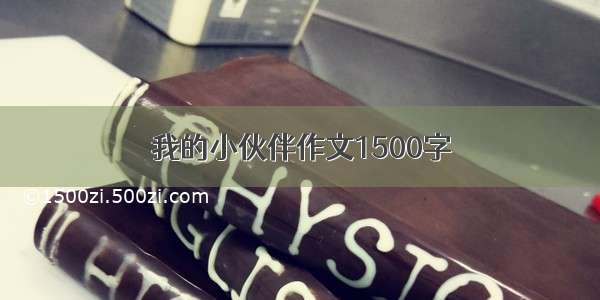
© SWA Group
Scroll Down for English
近日,ASLA(美国景观建筑师协会)度的各类获奖项目纷纷出炉,SWA斩获了众多专业奖项,其中由SWA及其合作团队设计的深圳深南大道景观改造项目,获得了美国景观建筑师协会北加州分会颁发的度分析和规划类荣誉优胜奖(Research, Planning, Analysis&Community category, ASLA Northern California Chapter Honor Award)。
作为城市的交通动脉和精神引擎,深南大道与深圳经济特区共同成长,见证了特区40年翻天覆地的剧变和成就。在多轮引发广泛讨论的改造尝试后,深南大道已然走到了一个新时代的路口:如何从一条单纯服务于机动车的大型市政道路,转变为一条融入城市日常生活,为市民生活提供服务的弹性、活力、宜居街道?
SWA的设计师与深圳的政府部门、规划团队、相关利益发展商、当地设计师团体和市民一起,重新定义城市大道的内涵,并为深圳中心设想了一条全新的绿色通廊:一条与城市功能肌理高度交织、为城市居民和自然生命充分共享的功能性景观基础设施廊道。这个先驱项目通过远期景观总体规划、近期实施核心区景观设计,和为大道沿线近280公顷的边界环境准备的技术设计导则,修复、串联、复兴城市的核心。随着新活动与新功能的注入与完善,深南大道将带动周边城市环境的发展,源源不断地为整个城市注入活力。
© SWA Group
01项目背景与设计过程
自深圳经济特区成立伊始,1980年只有2.1公里长的深南大道,在过去40年里逐渐成长为一条每天有460万人生活、工作其中的城市核心干道。的深南大道,串联了深圳最繁华的三个核心城区,每天运送的机动车辆超过32万台,80万个工作岗位聚集沿线;西端起点南头关,曾是中国改革开放历史中“二线关”的起点、特区探索新经济模式的象征。时至今日,这条大道串联了城市的所有核心功能区域,迎接源源不断的投资者和新移民来到这座伟大的城市。随着发展进入新的阶段,城市的注意力从追求速度和规模转向了追求品质和效益,深南大道设计之初“汽车至上”理念造成的巨尺度道路对生活服务缺失的缺点逐渐暴露。,SWA和其合作团队从深圳市绿化管理处牵头主办的国际竞赛中胜出,引领深南大道的改造复兴。
采访和会议照片版权 深圳市城市规划设计研究院有限公司
02分析
改造设计在不影响深南大道通行功能的前提下进行,设计师对深南大道的未来构想是使其策略性地融入城市的公园系统,成为深圳开放、共享的公共绿地系统中的重要串联。道路两侧原先密不透风的绿化隔离带,将作为具有复合功能的景观基础设施——复育城市生活和生态。
设计在开始之初对市民进行了广泛的访谈调研,并从交通、城市服务、生态等多个议题对场地进行了城市尺度的定位分析,凸显出来的最重要的议题包括:
- 街道生活缺失;
- 追求快速通行的自行车和电瓶车威胁步行者和无障碍人士的安全;
- 致密而宽阔的绿化隔离带大面积不可进入、不被共享;
- 面对暴雨台风等极端天气,排水系统和绿化种植非常脆弱;
- 深圳独特的发展起源、设区历史和二线关文化在城市快速迭代更新中被逐渐遗忘;
通过大数据分析、叠图研究、现场调研等方式,设计团队总结出改造切入的三大议题:巨体量交通下的土地低效使用与潜在公共活动场所的空间对应、串联公园的通廊本身成为城市休闲目的地的可能性、生态断点和水文盲点在立体层面的修复手法.
© SWA Group 可左右滑动阅览
02 设计
设计的核心策略包括恢复行人与野生动物的流畅穿行,利用两侧隔离带和中央绿化带空间增设线性公园和景观地毯,优化慢行网络与排水网络的组织。这些策略旨在帮助重组、连结、修复现有的基础设施的表皮、缓冲区和边界,通过增加功能性服务提升驾驶、骑行和漫步其中的市民的体验,并同时增强大道之于城市的生态价值。项目的重点措施包括强化8处跨街连结、缝合2条重要的山海生态通廊、打造9公里景观地毯、增设3处带状公园、优化10大城市门户、完善海绵城市系统。
© SWA Group
© SWA Group
手绘长卷版权 深圳市城市规划设计研究院有限公司
全面的提升工作将分步骤进行。设计团队建议将集中了最多问题的三个区域作为重点项目近期实施:
南头关区域,被设计为一条沟通了城市的历史和未来的“时空隧道”——城市西部门户。依托大型高架桥下方、周边的大面积缓冲区,在曾经的南头检查站地区形成新的栖息地环境和公园空间。改造现有人行天桥,使其成为一个车行、人行、生物穿行等各物质流、能量流互不干扰的立体系统。
© SWA Group
© SWA Group
© SWA Group
在深圳市内自然山海最为接近的园博园片区,一座双层绿桥帮助恢复区域在自然地理历史中的潮间带功能:引导“塘朗山-安托山-深圳湾”的自然生物流动,也将深南大道重新变为一条看得到海的诗意景观大道。借助现有山势,生态廊桥跨越深南大道,穿过地铁车辆段上盖部分的“昆虫旅馆”公园和中国红树林博物馆,抵达内伶仃红树林保护区的边缘。
© SWA Group
在大道沿线最繁忙的车公庙商务片区,设计简化了复杂的现状通行流线,提供更多的便民设施和服务空间。确保一条1.5米宽的自行车道贯通全段,策略性地更新铺装,整合户外家具、植被、照明等设施,以创造便利、宜人、独特的城市公共环境。
© SWA Group
© SWA Group
新的城市空间和步道系统将沿大道生长交织,并融入其经过的不同社区和城市环境。带状公园、步行走廊、园径和新的公共空间,将融入城市肌理,针灸式地激活城市环境,促成新的生活方式.
“SWA很荣幸能参与到深圳这个年轻城市的发展与变化中来,并与市民一起探索城市公共空间的多种可能性。我们意识到深圳是一座充满无限能量、极具开放精神的城市。深南大道作为深圳精神的空间象征,我们希望它也应具备相应的公共性、开放性和创新性。”
——SWA设计董事吴兆杰
项目业主:深圳市绿化管理处
景观设计:SWA Group
规划合作机构:深圳市城市规划设计研究院有限公司
种植设计合作机构:深圳媚道风景园林与城市规划设计院有限公司
公共艺术合作机构:深圳市公共艺术中心
Over 4.6 million people living and working along Shen Nan Boulevard, a traffic life line boosting Shenzhen, China’s fastest growing city in the past four decades. Following several controversial attempts, the City of Shenzhen is now poised to transform the large-scale roadway to be more livable and resilient in a strategic way.
Working with government, stakeholder developers, local design communities, and the general public, the design team rethinks the nature of traffic thoroughfare and reimagined a central stretch of Shenzhen City as functional landscape infrastructure: a new, green resources interwoven through the urban fabric and shared by everyone. This pioneer transformation project includes a long-term landscape master plan, short-term implementation plans for the next two years, and technical guidelines for 280-hectare thresholds along the 25.6-kilometer Shen Nan Boulevard, repairing, reconnecting, and enriching the core of Shenzhen City. Infused with the new activity, Shen Nan Boulevard will energize its margins, the adjacent districts, and the city as a whole.
01Backgroundand Process
Shen Nan Boulevard is the main thoroughfare through Shenzhen’s core. As of , its vast expanse connects three central city districts, carrying approximately 320,000 vehicles per day and boasting more than 800,000 jobs along its length. Starting from the gateway of the historical“China’s Berlin Wall”, a border separated China’s first open-up market economy zone from mainland China, the corridor connects all functional parts within the special economic zone, and long served as the first stop welcoming outside investors and immigrants to the city. As Shenzhen moves toward a slower pace of developmentand seeks higher-quality life, the boulevard has come under fire for itsmassive, vehicle-centric scale and poor services along its buffer and margins.
02 Analysis
The design intervention does not seek to decrease the boulevard’s traffic capacity, which has entrenched economic value; rather it will re-envision its margin as a transformative and strategic piece of the City’s park network. The boulevard will become hyper-mixed-use landscape infrastructure: linear public space that responds to city life.
The design process began with a public interviewand an analysis of traffic, services, and ecological issues. Primary takeaways from this process included:
- An absence of street life along the boulevard
- Unsafe bike and motorbike speeds on the sharedsidewalk seriously threaten passengers’ safety
- The dense green buffer along the boulevard islargely inaccessible
- Drainage and planting are vulnerable to typhoons andother storm events
- Shenzhen’shistory as a fishing settlement, and the unique memory of “China’s Berlin Wall”, are being forgotten.
After further investigation and study by mapping, big data analysis, and site visits, the design team summarized 3 outstanding topics associated with 6 existing issues of the boulevard that the design would need to address. First, that this giant transportation infrastructure’s contributions to the city’s economics cannot be denied; The 108 skyscrapers along the boulevard serve as the best evidence for this achievement. However, noise and pollution of the thoroughfare necessitate a vast buffer zone create decidedly negative environment for pedestrians and cyclists to approach. Second, despite having more than a million people living, working, or commuting along the boulevard’s margins every day, cross connections are poor, with the average crossing time of about three minutes from one side to the other of a typical 75-wide section. The negative experience is exacerbated by hot humid tropical climate. Lastly, the massive piece of infrastructure cuts deeply into nature and stops wildlife flows.The channelization of the existing water network (due to rapid urbanization) puts enormous pressure on the urban drainage system, making it vulnerable totyphoons and other extreme weather conditions.
03 Design
The core strategies that will employed along the boulevard involve reinstating pedestrian and wildlife crossings, attaching landscape “carpet” and linear parks to the medium and buffer, and enriching the performance of traffic and drainage. These strategies will reorganize, reconnect, and repair existing infrastructural surfaces, buffers, and easements of the boulevard in a manner that adds functional services and meaning todriving, biking and pedestrian experience, and by default, the ecological value to the city. In all, the transformation will reconnect eight comprehensive pedestrian linkages, repair two strong ecological connections from mountain to ocean, reform nine kilometers of median and buffer zone into landscape carpet, establish three new belt parks, celebrate ten urban gateways with different characteristics, and comprehensively improve the water and drainage system.
With such comprehensive interventions proposed, a phased implementation scheme was a key part of the design team’s work. Three core projects will comprise the early phase of renovation; these projects need to be implemented first because they exhibit most of the site’s issues, and can move forward quickly due to public investment and government funding.
The first of the implementation projects is Nantou Gateway, envisioned as a “time tunnel” connecting history and the future at the west starting point of the line. A historical Inspection station on “China’s Berlin Wall”, together with massive elevated intersections, will form the backdrop of new park space and habitat on the ground. Renovation of an existing pedestrian bridge will establish a zero-interference system for complicated interactions among traffic, pedestrians, and ecological networks.
At the pinch point between Shenzhen’s hills andocean lies a former intertidal zone. The plan suggests a double-layer green bridgein this area, conveying pedestrian and wildlife movement across the boulevard toward the ocean. Two new roof-park projects — a Pollinator Park and China Mangrove Museum— are also be established on top of capped metro depots.
The plan also reimagines one of the busiest areas along the boulevard, simplifying complex circulation challenges and reclaiming greenspace from existing facilities and utilities. The plan ensures the preservation of a 1.5-meter consistent bicycle lane and strategically renovates paving, outdoor furniture, planting, and lighting to create unique, human-scaled spaces.
Over time, new urban spaces and trail systems will be created along the line, inviting communities along the boulevard to take advantage of its transformation. Belt parks, promenades, trails,pedestrian bridges, and new development projects are envisioned throughout the cityfabric, creating new connections and reinvigorating quality-of-life.














